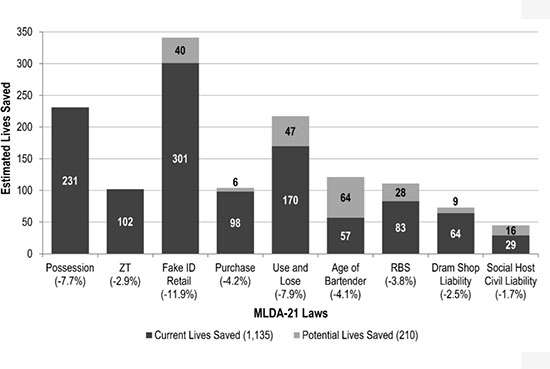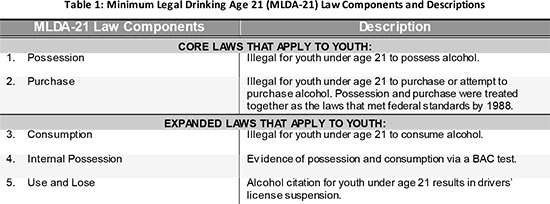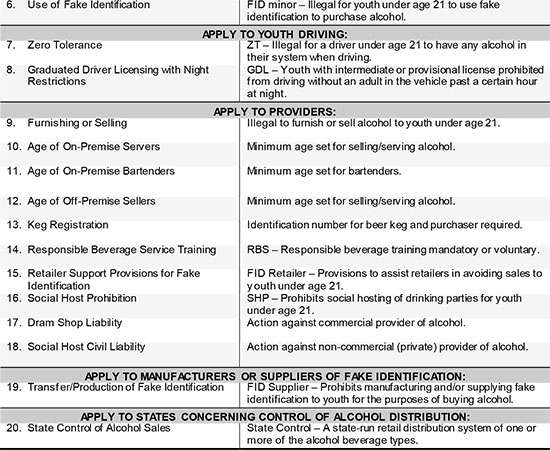New research reveals nine laws particularly effective in reducing underage drinking fatalities

New research reveals that nine laws designed to reduce underage drinking have been instrumental in saving more than 1,100 lives each year in the states that have adopted them, and that an additional 210 lives could be saved annually if they were adopted in every state.
While all 50 states have adopted a core minimum legal drinking age of 21, a large number of states have adopted expanded underage drinking laws. Those additional laws were the focus of research done by a team at the Pacific Institute for Research and Evaluation (PIRE) in Calverton, Maryland, and which will be published in the March 2016 issue of the Journal of Studies on Alcohol and Drugs.
Of the 20 expanded underage drinking laws that were identified, nine were found to be particularly effective in reducing the number of fatal crashes involving underage drinking drivers.
The authors examined each law's strengths and weaknesses in terms of coverage, sanctions for violations, exceptions, and ease of enforcement. Results showed wide variability in the strength of each underage drinking law and in the number of states that have adopted them. "We were surprised to find that half of the states have adopted 13 or fewer laws, that only five can be found in all 50 states and the District of Columbia, and that just one state, Utah, has adopted all 20," said lead author James Fell, now a principal research scientist at NORC at the University of Chicago. Fell said their particular interest was in the nine laws that made a significant difference in the number of fatal crashes.
The nine minimum legal drinking age laws associated with significant decreases in fatal crash ratios of underage drinking drivers were: possession of alcohol (-7.7%), purchase of alcohol (-4.2%), use alcohol and lose your license ( 7.9%), zero tolerance .02 blood alcohol concentration (BAC) limit for underage drivers (-2.9%), age of bartender ?21 ( 4.1%), state responsible beverage service program (-3.8%), fake identification support provisions for retailers (-11.9%), dram shop liability (-2.5%), and social host civil liability ( 1.7%).
The nine laws are estimated to be currently saving approximately 1,135 lives annually. The researchers estimate that if all states adopted them, an additional 210 lives could be saved each year.

















